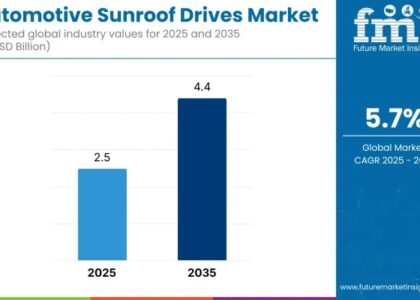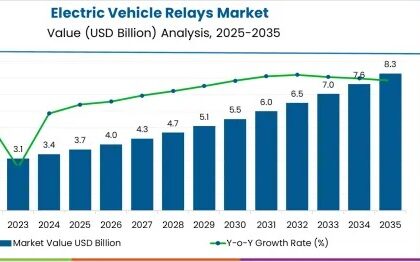Introduction: Reframing the Mixed Xylene Market through a Logistics Lens
The global mixed xylene market is conventionally analyzed through its demand across paints, coatings, adhesives, and petrochemical derivatives. However, an overlooked yet increasingly influential variable shaping its market dynamics is maritime trade logistics. Mixed xylene (MX), a key aromatic hydrocarbon comprising ortho-, meta-, and para-xylene isomers, is primarily transported via sea due to its high-volume international trade. In recent years, the reliability of marine logistics has come under strain, revealing its significant influence on mixed xylene pricing trends and regional availability. As global trade faces disruptions ranging from port congestion to container shortages, the mixed xylene industry is being forced to reckon with these non-traditional yet powerful market influencers.
𝐌𝐚𝐤𝐞 𝐈𝐧𝐟𝐨𝐫𝐦𝐞𝐝 𝐃𝐞𝐜𝐢𝐬𝐢𝐨𝐧𝐬 – 𝐀𝐜𝐜𝐞𝐬𝐬 𝐘𝐨𝐮𝐫 𝐒𝐚𝐦𝐩𝐥𝐞 𝐑𝐞𝐩𝐨𝐫𝐭 𝐈𝐧𝐬𝐭𝐚𝐧𝐭𝐥𝐲! https://www.futuremarketinsights.com/reports/sample/rep-gb-4965
How Marine Logistics Shape the Supply Side of the Mixed Xylene Equation
Mixed xylene is heavily produced and exported from petrochemical hubs in the Asia-Pacific and the Middle East, with substantial volumes directed toward industrial consumers in North America and Europe. The reliance on sea-based transport means that any disruption along major maritime corridors—such as the Suez Canal, Strait of Malacca, or Panama Canal—can delay shipments, distort regional supply chains, and cause price swings.
Shipping mixed xylene involves specialized chemical tankers and coordination with port authorities for safe docking, offloading, and transport. However, growing backlogs at ports like Singapore, Shanghai, and Rotterdam have constrained the efficient flow of xylene shipments. Factors such as global container imbalances, weather-induced port closures, and heightened regulatory customs inspections have compounded the delays. These inefficiencies, while not chemical-specific, significantly affect MX’s availability due to its dependence on predictable supply schedules and price-sensitive markets.
Additionally, rerouting tankers to avoid congested or politically unstable regions inflates transportation costs and lead times. These changes are often passed downstream, contributing to volatile spot prices. According to Future Market Insights, the mixed xylene market is anticipated to expand continuously, with a value of USD 58.2 billion in 2025, likely to reach around USD 104.1 billion by 2035, exhibiting a CAGR of about 5.1%.
Case Studies: Port Congestion and Mixed Xylene Price Spikes in Asia-Pacific
A closer look at recent disruptions offers a clearer understanding of how maritime constraints impact the mixed xylene industry. In mid-2022, India’s Nhava Sheva Port and China’s Ningbo-Zhoushan Port experienced unprecedented vessel traffic and offloading delays due to surging import volumes and labor shortages. This coincided with seasonal demand for xylene-based solvents in manufacturing and construction sectors. The result was a sudden, short-term supply crunch, which led to a spike in spot prices by nearly $50 per metric ton across major Indian cities such as Mumbai and Chennai.
𝐔𝐧𝐥𝐨𝐜𝐤 𝐂𝐨𝐦𝐩𝐫𝐞𝐡𝐞𝐧𝐬𝐢𝐯𝐞 𝐌𝐚𝐫𝐤𝐞𝐭 𝐈𝐧𝐬𝐢𝐠𝐡𝐭𝐬 – 𝐄𝐱𝐩𝐥𝐨𝐫𝐞 𝐭𝐡𝐞 𝐅𝐮𝐥𝐥 𝐑𝐞𝐩𝐨𝐫𝐭 𝐍𝐨𝐰: https://www.futuremarketinsights.com/reports/mixed-xylene-market
Similarly, during early 2023, South Korea’s Ulsan Port—a major terminal for petrochemical exports—faced severe congestion caused by typhoon-induced closures and a subsequent backlog of chemical tankers. Mixed xylene shipments were delayed by over ten days, prompting South Korean refiners to defer their export commitments. This bottleneck disrupted xylene imports into Taiwan and Southeast Asia, regions that heavily depend on consistent marine supply, leading to a 12% price uptick over a three-week period.
Such events underscore how localized port disruptions can create ripple effects across interconnected trade lanes, destabilizing prices even in distant consumption zones.
Price Volatility and Strategic Reserves: How the Industry is Responding
Recognizing the growing unpredictability in marine logistics, several mixed xylene stakeholders have begun adopting strategic countermeasures. One emerging trend is the development of regional storage hubs that act as buffer reserves during times of logistical strain. In 2024, a major petrochemical firm in the UAE expanded its storage capacity near the Port of Fujairah, citing the need to “mitigate delivery fluctuations caused by shipping volatility.” Similar initiatives have been reported in Malaysia and Singapore.
In addition, companies are increasingly negotiating long-term freight contracts with shipping firms to secure vessel availability and reduce exposure to spot shipping rates. Some have also diversified their shipping routes, using smaller ports or leveraging land-based transport corridors such as China’s Belt and Road railway to reach inland chemical processors in Europe.
On the pricing front, market analysts are incorporating maritime indicators—such as port congestion indexes, shipping container availability scores, and canal wait times—into their xylene pricing models. This shift reflects a broader understanding that traditional market forecasting methods, which focused predominantly on production volumes and downstream demand, are insufficient in today’s fluid trade environment.
Hydrocarbons, Petrochemicals, and Organic Chemicals: https://www.futuremarketinsights.com/industry-analysis/hydrocarbons-petrochemicals-and-organic-chemicals
Why the Mixed Xylene Market Can No Longer Ignore Maritime Risk Factors
The mixed xylene market is undergoing a subtle but critical evolution. While demand fundamentals tied to paints, plastics, and fuels continue to shape the broader market, logistical variables—particularly maritime disruptions—have emerged as silent price drivers. From the Suez Canal blockages to weather-induced port closures in East Asia, these events have repeatedly proven their capacity to destabilize supply and inflate regional prices.
As global trade remains vulnerable to geopolitical, environmental, and infrastructural shocks, it is imperative that mixed xylene producers, traders, and end-users integrate marine logistics considerations into their operational planning and pricing strategies. The future of the MX petrochemical market may well depend not just on production volumes or feedstock prices, but on the smooth passage of a tanker through a crowded port.





